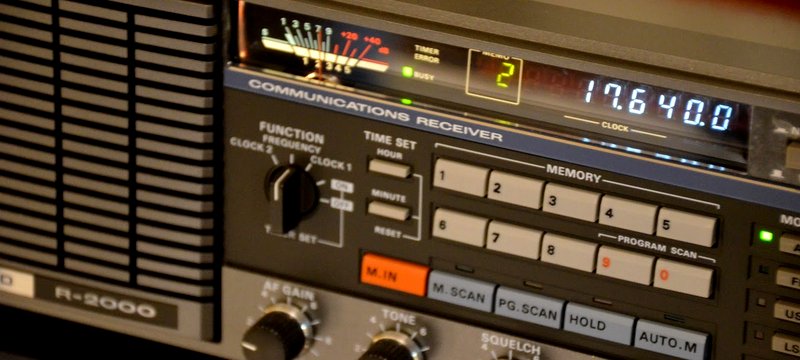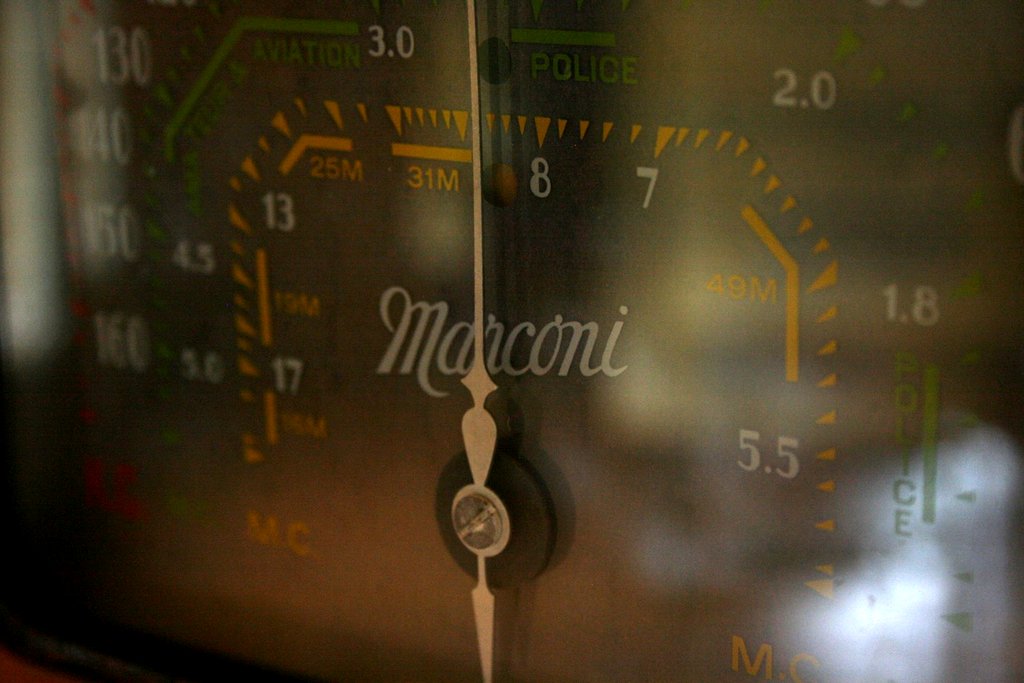
Many thanks to SWLing Post contributor, Ferruccio Manfieri (IZ1096SWL), who shares this report and excellent photo tour from a visit to the Museo Marconi in Bologna, Italy in 2018.
Today is International Marconi Day, so this is a very welcome, and timely post:
A visit to Museo Marconi in Villa Griffone, Pontecchio, Bologna
by Ferruccio Manfieri (IZ1096SWL)
Bologna, in Northern Italy, is renowned to be the seat of the oldest University in Europe and in the world (the Alma Mater Studiorum) and its historic, artistic and culinary heritage. From a scientific perspective, Bologna is the birthplace of Guglielmo Marconi as well as the place of his first experiments in transmission.
The inventor, born in Bologna on April 25th, 1874, was the son of an Italian father (Giuseppe, a wealthy landowner) and an Irish mother (Annie Jameson, of Jameson’s Whiskey family). At the age of 20, Marconi began to conduct experiments in radio waves, building much of his own equipment in the attic of his home at the Villa Griffone in Pontecchio (in the Bolognese countryside).
Marconi received his final resting place in Villa Griffone Mausoleum, an enterred crypt hosting his porphyr sarcophagus. The building was donated to the Guglielmo Marconi Foundation in 1941 after the death of the inventor (on the 20th of July 1937).
Sadly, Villa Griffone and the Mausoleum suffered heavy damages from WWII bombings and pillages and were patiently rebuilt in post-war years. Today, Villa Griffone is reborn as a hub of research and divulgation activities, hosting Guglielmo Marconi Foundation, the Marconi Museum, a library and two research groups on communication systems.
On the 26th of april 2019 I visited with my family the Museum hosted in the original building (a short trip from Bologna, 20 minutes by public transport)

Villa Griffone and the Marconi Mausoleum
The visit began with a nice stroll in the Villa gardens, home with the nearby hill of the Celestini of the first long-range and not in line of sight transmission experiment in 1895. Marconi managed to send signals over a distance of 2 km, beyond a hill situated between the transmission equipment (to which he had added a grounded vertical antenna) and the reception apparatus (characterised by an extremely sensitive coherer).
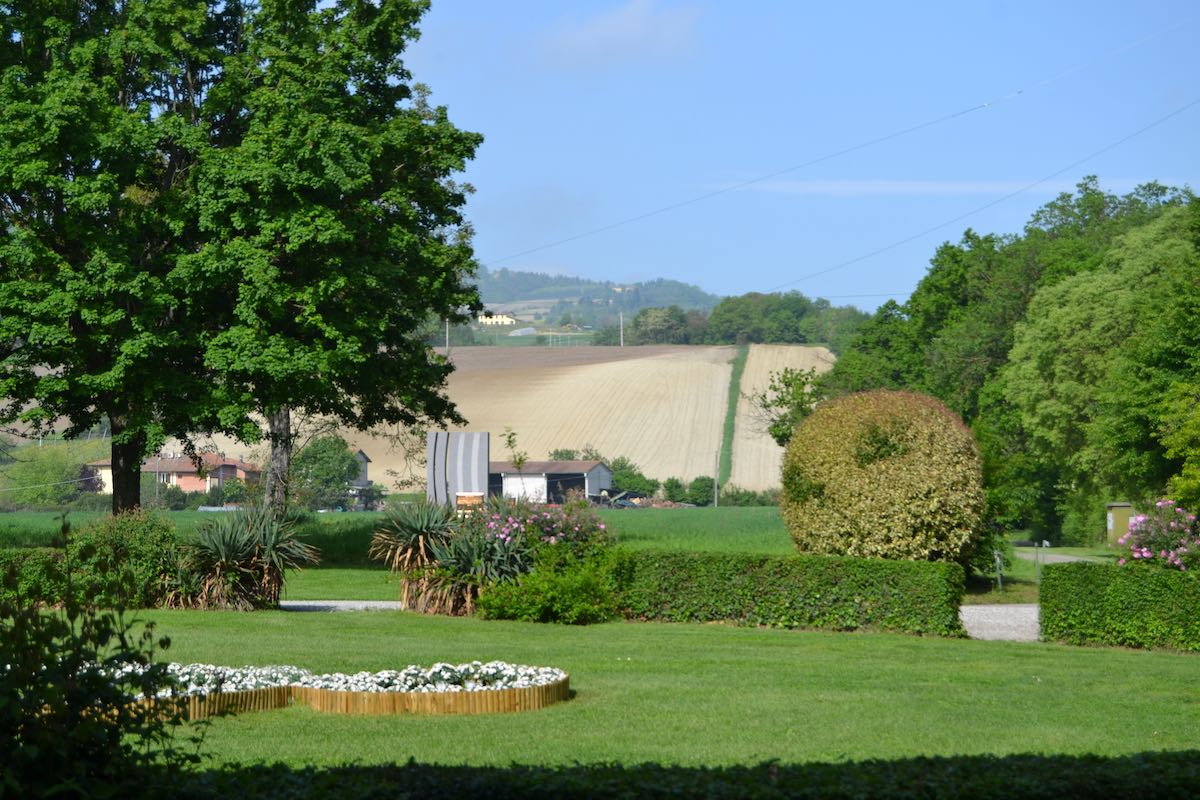
Villa Griffone gardens and “Hill of Celestini”
We were in the very spot Marconi was when he transmitted his three signals to the receiver operated by his brother and the gardener behind the hill. Nearby, the replica of eight meter wooden pole with the attached metal boxes used as antenna.

Marconi’s first “long range” antenna – replica
This experiment in universally aknowledged as the birth of radio transmission (and, by the way, the rifle shot used as a confirmation of the reception was the very first QSL…).
Our valent host and guide to the visit was the Director of the Museum, Barbara Valotti, who thoroughly described us (with knowledge, passion and communication skills) the historical framework of Marconi’s biography and works. A more engineering oriented and hands-on visit to the working replicas laboratory was subsequently hosted with passion and knowledge by Adriano Neri I4YCE.
In the Auditorium Dr. Valotti showed us two videos on the first transmission experiment and on the Republic incident in 1909, on of the first application of Marconi radiotelegraphy in an incident at sea, whose success (no lives were lost in the aftermath of the collision thanks to the coordination of rescue efforts via radiotelegraphy) gave a boost of popularity to radiotelegraphy and to the engineer, eventually leading to the Nobel prize in physics later that year.
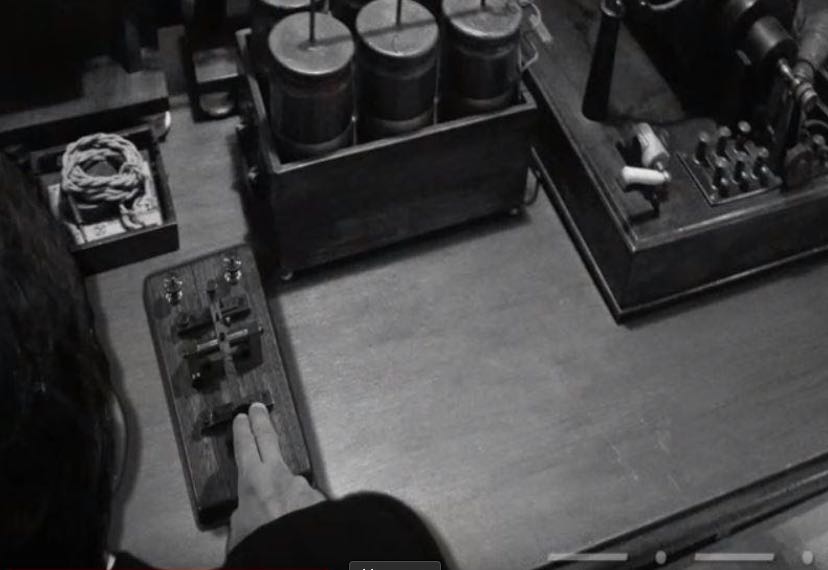
A frame of the “Republic” video
This part of the visit emphasized his interest in real technological applications of his inventions and their commercial potential. Marconi was a “modern” mix of engineer (with an unhortodox, non-academic formation) and entrepreneur, ready to see the new potential applications of technologies in the society. Interestingly, Dr. Valotti underlined that the main focus of Marconi research was always the point-to-point trasmission and not the broadcast.
Hanging on the ceiling of the auditorium, a replica of the kite used by Marconi to lift an emergency antenna in the first transoceanic transmission from Poldhu to St Johns Newfoundland in 1901.
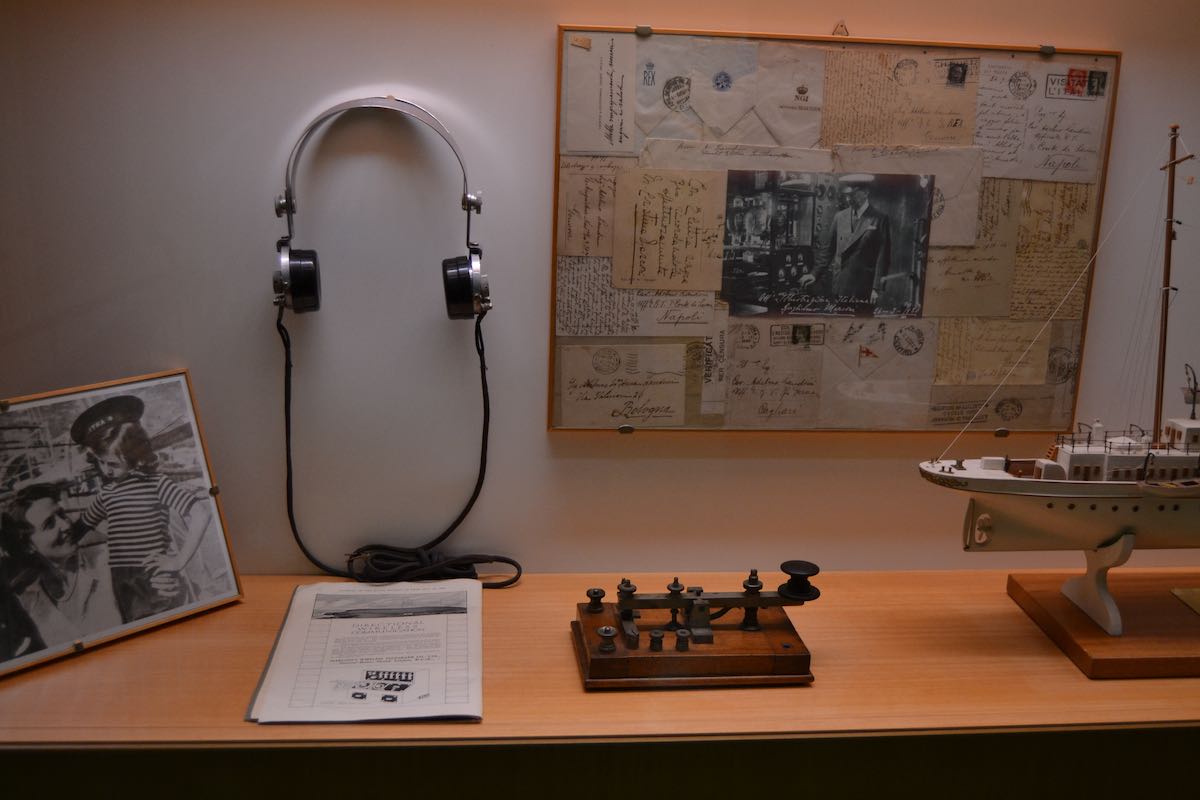
Yacht “Elettra” – memorabilias
The visit continued to the “silkworm room”, the original room (once used to breed silkworms) where Marconi held his laboratory and performed his experiments. The room was full of instruments replicas to show the laboratory as in the young Marconi years.

“Silkworm room” – Marconi’s first laboratory (original place, instrument replicas)
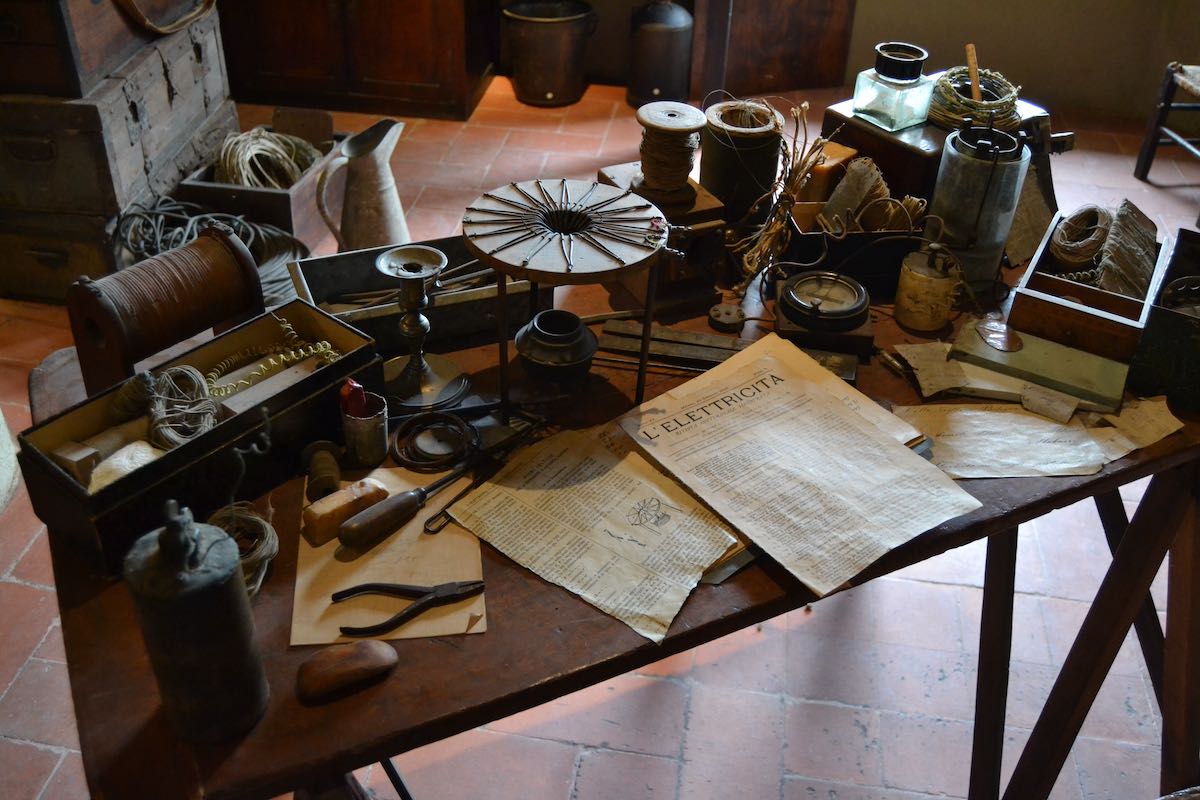
“Silkworm room” – Marconi’s desk (replica)
It was also possible to replicate the main experiments with educational working replicas.
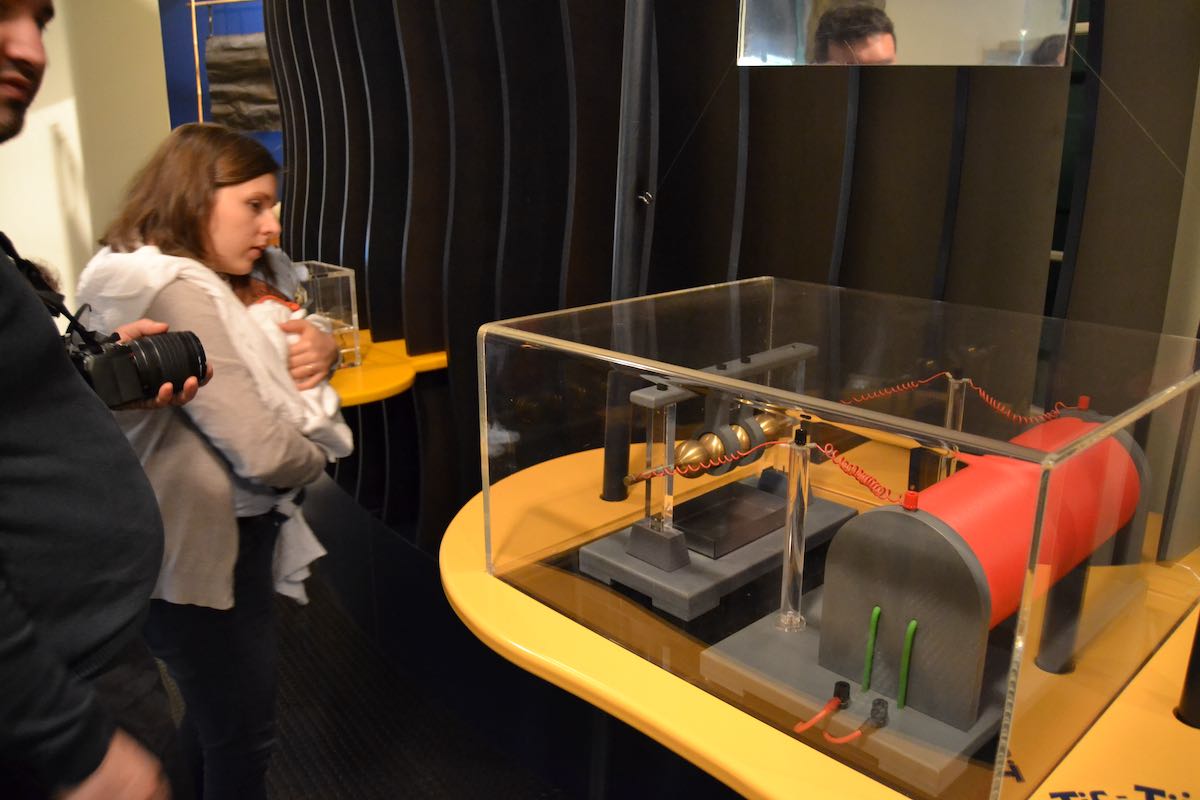
Marconi transmitter – educational replica
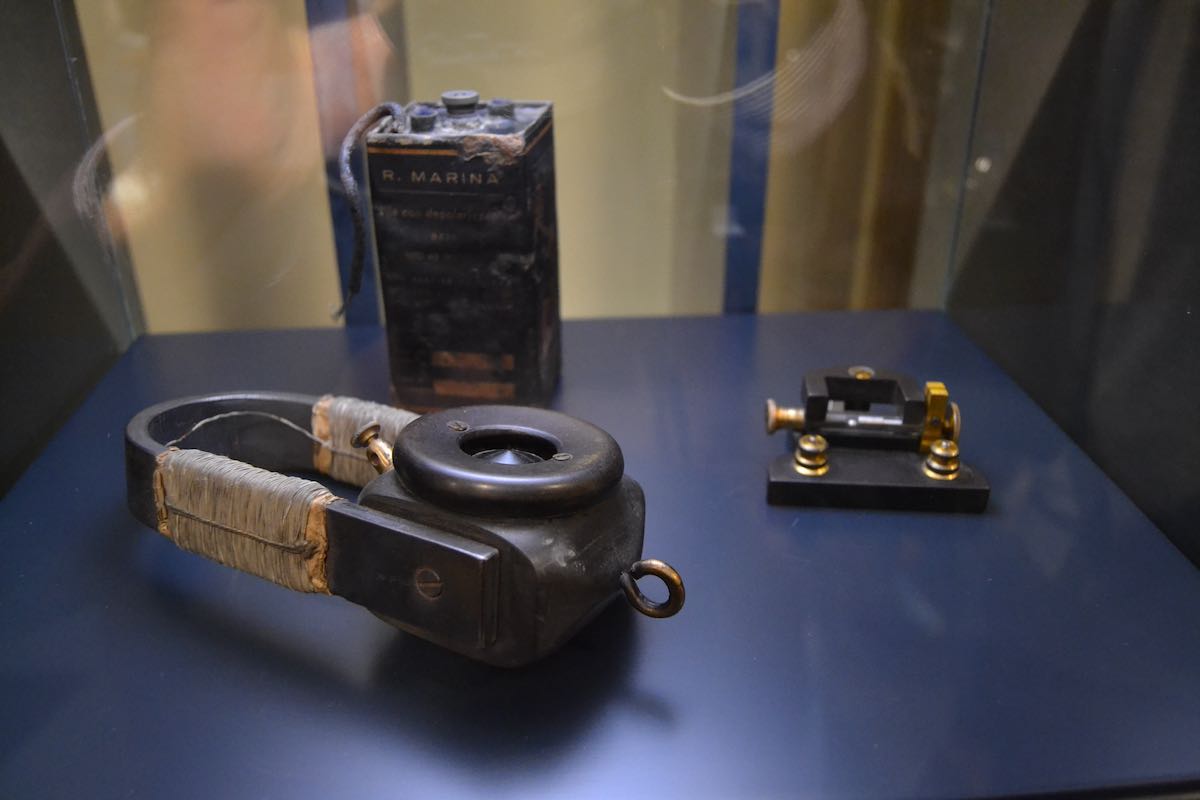
Headphone and coherer used in the first transoceanic transmission (replicas)
The second phase of the visit was a more engineering-oriented explanation of the principles of radio telegraphy conducted by Adriano Neri I4YCE in a didactic laboratory on working replicas of the main epoch instruments.

Experiment table with working replicas: coherers, a wire decoder, a Marconi receiver

Instruments in the educational laboratory
With passion and competence, Mr. Neri explained us in a simple way (there were some very interested young people in the group) the cable telegraphy principles and the sequence of experiments and discoveries that led Marconi to his inventions.
In a detailed and fascinating exposition we saw applications of a Morse writer, the induction coil, the coherer and the first Marconi spark transmitter, all assembled in the end to transmit in the room some morse signals in the air.
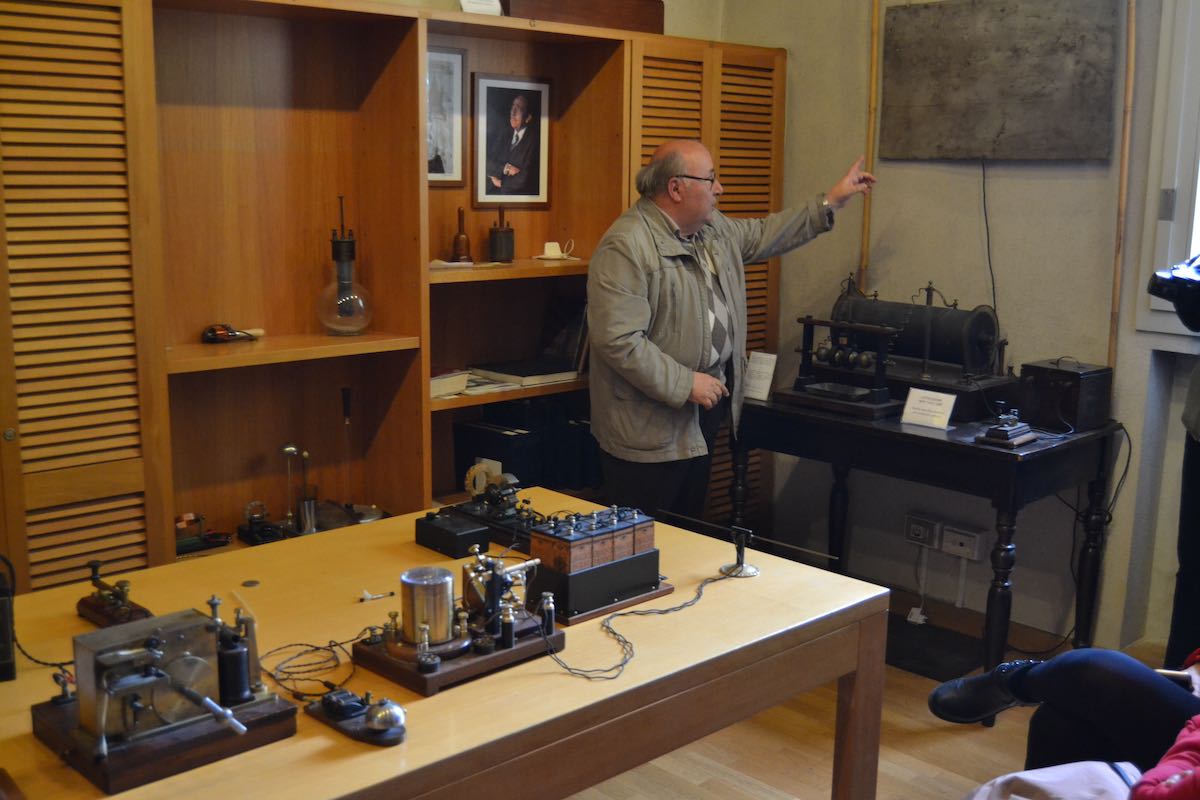
Live demonstration of signal transmission by Adriano Neri . Against the wall a Marconi spark transmitter (note the antenna and ground plates), on the table: a Marconi receiver (with a coherer) connected with a Morse writer.
The laboratory, as the whole museum, hosts a huge number of working replicas (a wonderful collection in itself, handmade by Maurizio Bigazzi with rigorous standards of adherence to the original designs and, if possible, reuse of original parts) and some original equipment.
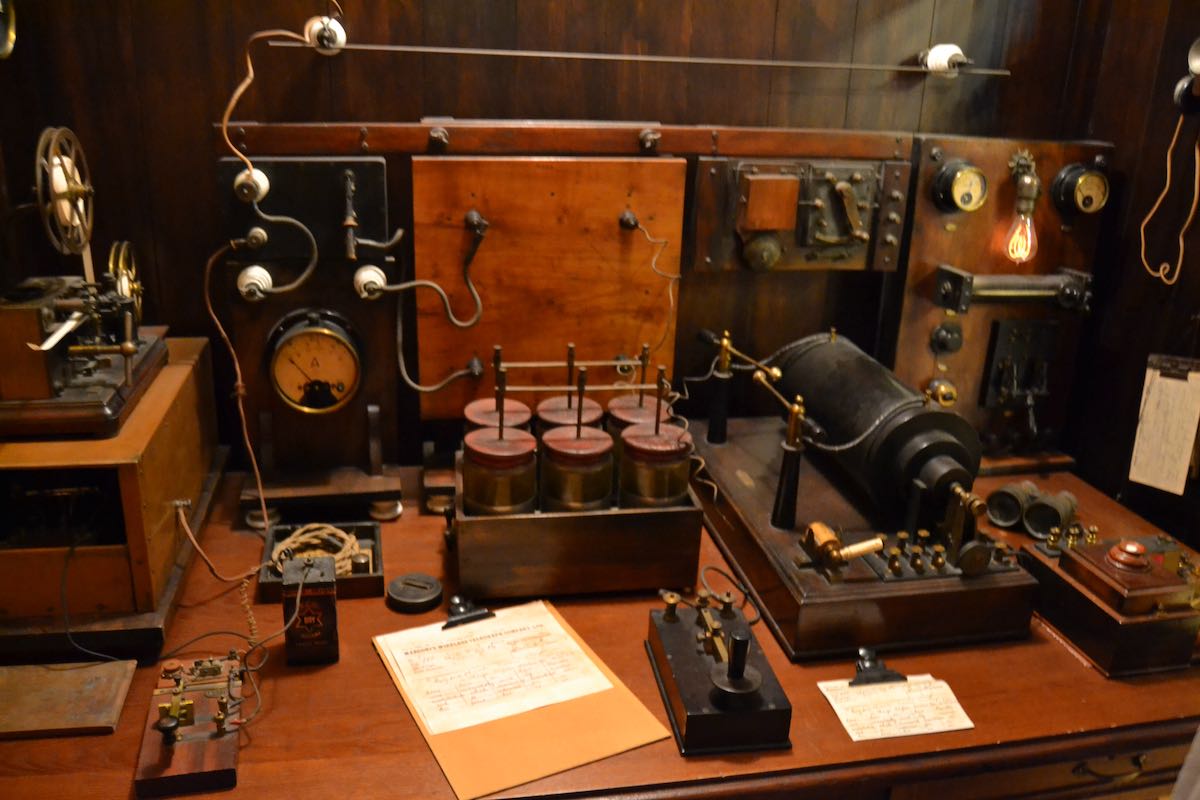
Ship wireless telegraph room – working replica
A last section of the museum is devoted to radio communication during the war (showing a WWI airplane-ground communication system) and radio broadcasting, with original sets of great interest like a 1923 Marconiphone (still working, we had a live demonstration receiving RAI programs) and a Ducati radio (the same Ducati company of motorbikes, based in Bologna).

WWI plane radio and ground receiver
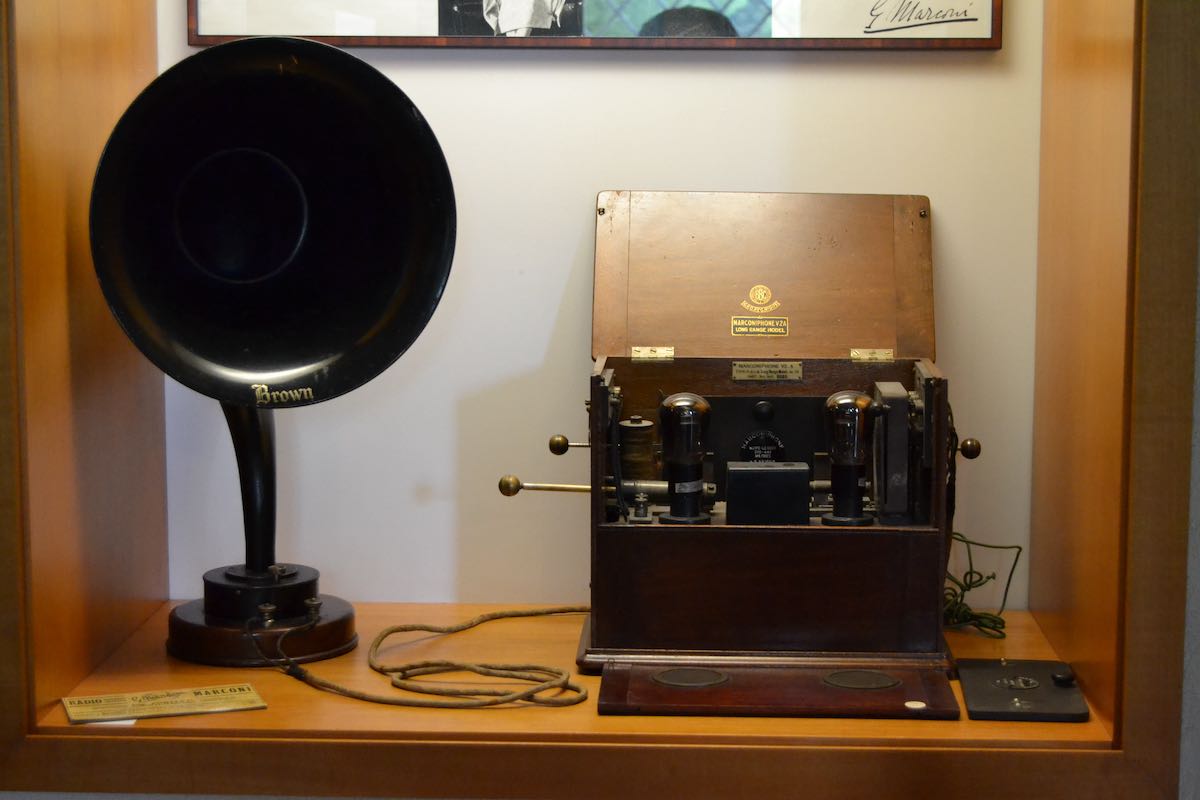
1923 Marconiphone, working original set

Ducati radio
We spent all the morning in the Museum with great fun and interest from all the family.
I highly recommend a visit to the Museum for the place, its significance in the history of radio transmission and the competent and passionate exposition of the historical and technical themes related to Guglielmo Marconi.
A wealth of information (also in english) can be found of the Guglielmo Marconi Foundation website (www.fgm.it).
A detailed gallery of the Museum can also be found on the new Museum website (www.museomarconi.it)


